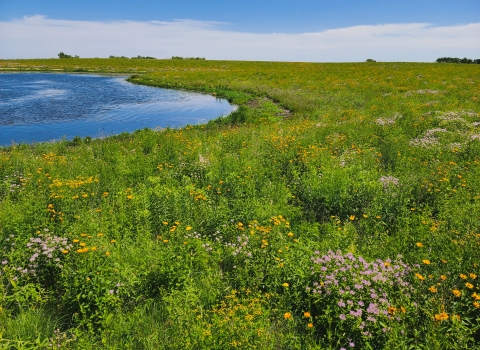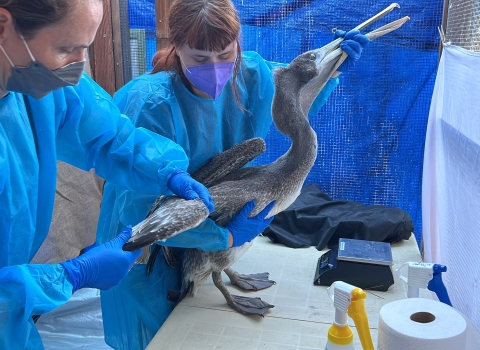LAKEWOOD, Colo. – Both the Winkler and San Rafael cacti are small, yellow to peachy-pink flowering plants, which are found only in Utah. Amazingly, these cacti retract entirely into the ground during the winter and dry seasons.
Today, the U.S. Fish and Wildlife Service (Service) is releasing a Draft Recovery Plan aimed at reducing the threats to these plants. The goal is to restore the Winker and San Rafael cacti to secure, and self-sustaining populations, so they can be removed from the list of threatened and endangered species.
The Winkler and San Rafael cacti, respectively, have been listed as threatened and endangered under the Endangered Species Act (ESA) for nearly 20-30 years. Major threats include livestock grazing, drought, off-highway vehicle traffic, illegal collection, and inadequate protections against these threats. The recovery plan describes site-specific actions, and establishes objective, measurable criteria necessary to conserve the cacti.
Part of the challenge is the Winkler cactus grows only in certain fine-textured soil, where most dinosaur fossils are discovered, on rocky hill tops and barren, gentle slopes at 4,900-7,000 feet elevation. They grow among salt desert shrubs in Sevier, and Wayne counties in south-central Utah. The San Rafael cactus grows at similar elevations, but in a wider range of soil types, yet is only found in Emery County, Utah. The Service believes there are still enough thriving plants today to restore both species through the recovery plan.
To help refine the recovery plan, the Service is seeking review and comment by the public, other federal and state agencies, and independent scientists. Comments are requested by July 5, 2016, which is 60-days after publication of the Notice of Availability of the Draft Revised Recovery Plan on May 5, 2016, in the Federal Register. You can submit written comments via U.S. mail or hand-delivery to: Utah Ecological Services Field Office, U.S. Fish and Wildlife Service, Field Supervisor, 2369 West Orton Circle, Suite 50, West Valley City, UT 84119.
Please remember that the Service will include any personally identifiable information that is provided. To view the complete Federal Register notice, visit https://federalregister.gov/a/2016-10517. The Draft Revised Recovery
The ESA is an essential tool for conserving the nation’s most at-risk fish, wildlife, and plants, as well as the land and water on which they depend for habitat. The ESA has saved more than 99 percent of the species listed from the brink of extinction, and has served as the critical safety net for wildlife that Congress intended, when it passed the law 40 years ago. The Obama Administration has delisted more species due to recovery than any prior administration, including the Oregon Chub, Virginia northern flying squirrel, and brown pelican.
The mission of the U.S. Fish and Wildlife Service is working with others to conserve, protect, and enhance fish, wildlife, plants, and their habitats for the continuing benefit of the American people. We are both a leader and trusted partner in fish and wildlife conservation, known for our scientific excellence, stewardship of lands and natural resources, dedicated professionals, and commitment to public service.
Connect with our Facebook page at http://www.facebook.com/USFWSMountainPrairie, follow our tweets at http://twitter.com/USFWSMtnPrairie, watch our YouTube Channel at http://www.youtube.com/usfws and download photos from our Flickr page at http://www.flickr.com/photos/usfwsmtnprairie/.


